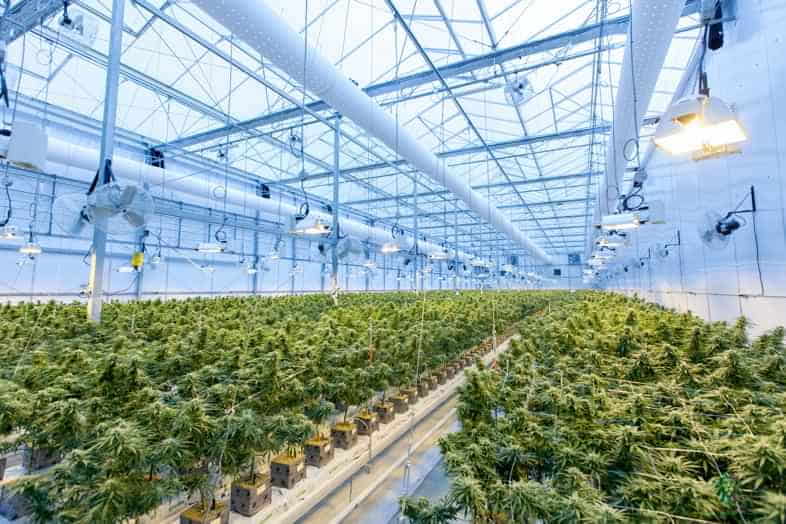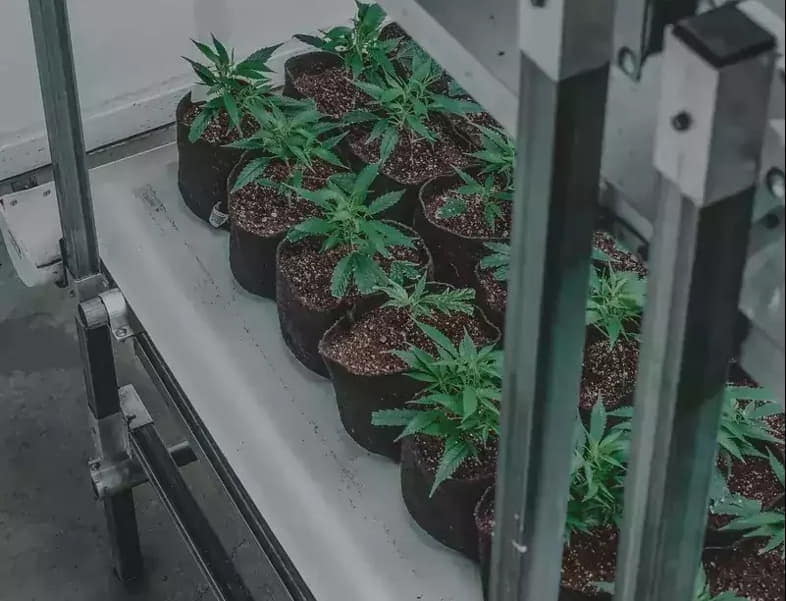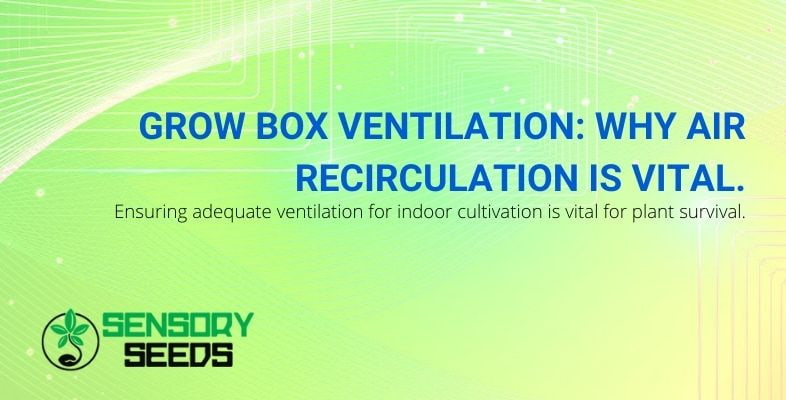Modified on: 20/09/2022
Ensuring adequate ventilation for indoor cultivation is vital for plant survival. Here’s how you can ensure that they always receive fresh air
Taking care of the seedlings in a grow box can be complicated. Although cannabis cultivation is forbidden in the UK, you may still be interested to know how experts in the field work in countries where this activity is permitted. To take care of the growth of a hemp plant, some critical aspects need to be considered, such as the ventilation of the grow box. If constant air exchange is not guaranteed, the seedlings in the grow box could die from diseases or pests.
In this article, we will explain why indoor growers should pay attention to ensuring proper ventilation and how you can allow the plants to receive adequate amounts of CO2 and heat inside the grow box. 

Grow box ventilation: why do plants need fresh air?
Cannabis plants need fresh air for two main reasons:
- for photosynthesis: which enables them to convert atmospheric light, water and carbon dioxide into food;
- to breathe: plants use air to convert glucose and oxygen from photosynthesis into energy to fuel their growth.
Without fresh air, cannabis plants will literally starve to death. But before this happens, the lack of ventilation in the grow box will create a breeding ground for pathogens and pests. Without proper ventilation, warm, stale air accumulates around the plants, creating a hot, humid environment that many pests and pests love. Proper ventilation helps ensure successful and healthy indoor cultivation. A constant supply of fresh air provides plants with adequate levels of CO₂ and keeps humidity under control to prevent mould from becoming a problem. Paying attention to air recirculation is therefore crucial for the survival of cannabis seedlings.
Read also: Trimming cannabis: why it is essential to do it right
There is no standard solution for ensuring air recirculation in the grow box
Depending on the size of the cultivation, simply opening a window may be sufficient to ensure air recirculation, whereas large-scale operations will inevitably require fans and extractor fans.
If the plants are grown outdoors, this is not a problem to worry about: in this case, there will be plenty of fresh air. But if we switch to indoor cultivation, another way of providing this air containing both oxygen and CO₂ for our plants is necessary.
A second, equally important reason for ventilation is the removal of heat. When the temperature gets too high, growth is hindered: in an excessively hot environment, the plant may experience a condition that, for us humans, is that of fever, reducing the flow of sap and causing a delay in growth.
There is no standard solution for air refreshment, and the requirement depends mainly on the volume of the growing space measured in cubic metres. The entire cultivation space should be refreshed every 2-3 minutes. 

Electric or manual ventilation? The choice depends on the size of the cultivation
Plants synthesise nutrients from carbon dioxide and water during photosynthesis, but this vital resource may be depleted in an indoor cultivation system. On the other hand, an uninterrupted supply of fresh air from outside allows the plants to obtain the CO2 they need to continue producing food.
Maintaining optimal carbon dioxide levels then promotes the growth and yield of the crop. It should also not be forgotten that, through transpiration, plants release water into the atmosphere. This process can make a poorly ventilated grow box damp, turning it into a breeding ground for pests.
The humid environment also leads to an increase in temperature, which may weaken the cultivation. An effective ventilation system can expel excess moisture while maintaining adequate soil to encourage the plant roots to absorb nutrient-rich water. This will result in healthier cultivation.
In the open field, the wind will blow on the plants, and the swaying will help them build a stem that can support them, even when bearing fruit or seeds. A ventilation system helps recreate these dynamics to help plants support their shoots as they mature.
To achieve these benefits, a ventilation system must stabilise temperature and humidity levels and provide plants with CO2 for photosynthesis. There are mainly two possibilities to promote air recirculation:
- With manual ventilation, it is possible to cover a space with few plants, allowing the cultivation access to fresh air for a few hours a day. In this case, leaving a door or window open for a certain period is sufficient; if this is not deemed enough, you can always do a smell test. If you enter the room and smell something stale, you can be sure that it is time to open one or two windows and manually freshen the air.
- Electric ventilation, on the other hand, involves using an electrically powered device, ranging from a simple bathroom fan to industrial fans, depending on the size of the space and the number of plants.
Read also: Cannabis edibles: what they are and their effects on the human body
Insufficient ventilation? It could frustrate growers’ efforts
In this article, we looked at one of the critical aspects that make indoor cannabis cultivation possible, namely ventilation. This is an essential aspect to take into account for those who decide to grow their own hemp plants in a country where this activity is permitted by law.
Failure to ensure proper air circulation may make the grower’s efforts in vain, making the plants susceptible to pests and more prone to diseases. Ventilation also depends on the size of the grow box. While opening the windows for a few hours a day may be sufficient for smaller grow boxes, there are cases where it is essential to invest in a mechanical air exchange system, i.e. an electric ventilation system.
If the world of cannabis fascinates you, drop by our Sensoryseeds website. You will find many products and interesting facts about marijuana. You’d choose from our wide range of quality weed seeds: feminized seeds, auto flower seeds, fast growing weed seeds, there is something for every taste!
We look forward to seeing you on Sensoryseeds.com!









